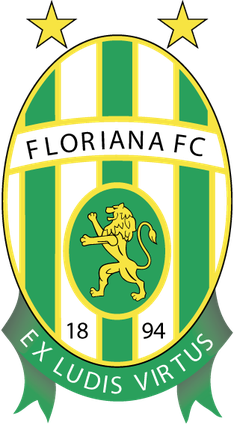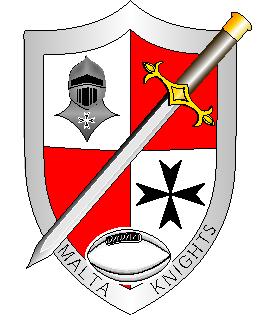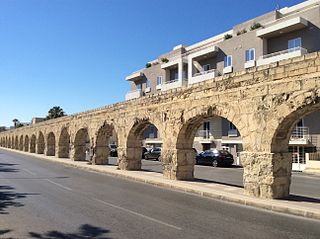
The politics of Malta takes place within a framework of a parliamentary representative democratic republic, whereby the President of Malta is the constitutional head of state. Executive Authority is vested in the President of Malta with the general direction and control of the Government of Malta remaining with the Prime Minister of Malta who is the head of government and the cabinet. Legislative power is vested in the Parliament of Malta which consists of the President of Malta and the unicameral House of Representatives of Malta with the Speaker presiding officer of the legislative body. Judicial power remains with the Chief Justice and the Judiciary of Malta. Since Independence, the party electoral system has been dominated by the Christian democratic Nationalist Party and the social democratic Labour Party.

Valletta is an administrative unit and the capital of Malta. Located on the main island, between Marsamxett Harbour to the west and the Grand Harbour to the east, its population within administrative limits in 2014 was 6,444. According to the data from 2020 by Eurostat, the Functional Urban Area and metropolitan region covered the whole island and has a population of 480,134. Valletta is the southernmost capital of Europe, and at just 0.61 square kilometres (0.24 sq mi), it is the European Union's smallest capital city.

Floriana, also known by its title Borgo Vilhena, is a fortified town in the South Eastern Region area of Malta, just outside the capital city Valletta. It has a population of 2,205 as of March 2014. Floriana is the birthplace of many famous Maltese, amongst which the composer of the national anthem, 'L-Innu Malti', Robert Samut; former Bishop of Malta Dun Mauro Caruana, the poets Oliver Friggieri and Maria Grech Ganado, the writer and politician Herbert Ganado and Swedish Idol winner Kevin Borg.

The Labour Party, formerly known as the Malta Labour Party, is one of the two major political parties in Malta, along with the Nationalist Party. It sits on the centre-left of the political spectrum.
A voting age is a minimum age established by law that a person must attain before they become eligible to vote in a public election.

Floriana Football Club is a Maltese professional football club in the town of Floriana that currently plays in the Maltese Premier League. In all, Floriana F.C. has won 26 national leagues and 21 FA Trophies. It is also the only team from Malta to have qualified from the qualifying rounds to the first round proper of the UEFA Champions League, in the 1993–94 season.

Malta elects on a national level 6 MEPs representing Malta in the European Parliament, on a district level the legislature, On a local level the Local Councils and on a community level the Administrative Committees.

António Manoel de Vilhena was a Portuguese nobleman who was the 66th Prince and Grand Master of the Order of St. John of Jerusalem from 19 June 1722 to his death in 1736. Unlike a number of the other Grand Masters, he was benevolent and popular with the Maltese people. Vilhena is mostly remembered for the founding of Floriana, the construction of Fort Manoel and the Manoel Theatre, and the renovation of the city of Mdina.
Football in Malta is run by the Malta Football Association and was introduced to Malta during British rule in the mid-19th century. The sport at the time was new to England, and was used as a means of entertainment for the soldiers stationed in Malta at the various barracks around Malta at the time. In 1863 a football association was formed which governed rules and regulations for this quickly changing sport, which was still in amateur competition stage and played in an un-scheduled format until 1909 when a league format was introduced.

Rugby league is an emerging full-contact team sport in Malta. The first game played at Marsa in 2005 by a largely Australian-Maltese touring team from the East-coast of Australia. The Maltese team opened with a successful 36–6 victory over England Lionhearts and featured one local Maltese player, Robert Bonavia.

The Floriana Lines are a line of fortifications in Floriana, Malta, which surround the fortifications of Valletta and form the capital city's outer defences. Construction of the lines began in 1636 and they were named after the military engineer who designed them, Pietro Paolo Floriani. The Floriana Lines were modified throughout the course of the 17th and 18th centuries, and they saw use during the French blockade of 1798–1800. Today, the fortifications are still largely intact but rather dilapidated and in need of restoration.

Local elections were held in 22 localities in Malta on 10 March 2007. The last round of elections held in 2004, on the same day of the national election for the Maltese Members for the European Parliament (MEPs). Approximately 68% of the eligible voters turned up on election day. With the locality of Safi with the highest percentage (86%); and the locality of Swieqi with the lowest percentage (53%). The largest locality was that of Mosta and the smallest one was that of San Lawrenz, Gozo.
Local elections were held in Malta on Saturday, 10 March 2012.

The Wignacourt Aqueduct is a 17th-century aqueduct in Malta, which was built by the Order of Saint John to carry water from springs in Dingli and Rabat to the newly built capital city Valletta. The aqueduct was carried through underground pipes and over arched viaducts across depressions in the ground.
The 2016–17 Maltese FA Trophy was the 79th version of the tournament. This version of the competition began on 3 September 2016 and ended on 20 May 2017. For the first time since 1933 the new Malta Football Association FA Trophy was unveiled. The new trophy, which is partly financed by the English FA, was presented for the first time to the winners.

The Embassy of the United States of America in Malta is the diplomatic mission of United States of America to the Republic of Malta. The embassy building, opened in 2011, consists of a 10 acres (40,000 m2) compound at Ta' Qali National Park in Attard, Malta.
The 2019–20 Maltese Premier League was the 105th season of the Maltese Premier League, the top-flight league football in Malta. The fixtures were announced on 2 July 2019; the season started on 23 August 2019 and was scheduled to conclude on 25 April 2020. Valletta were the defending champions, having won their 25th title the previous season.

The rivalry between Valletta F.C. and Floriana F.C. is a notable one in Maltese football as both clubs are recognised for having great history and traditions, and moreover, the respective localities of Valletta, the capital city of Malta and Floriana, its immediate suburb, are adjacent to each other.

The 2021–22 Maltese FA Trophy, officially named IZIBET FA Trophy due to sponsorship reasons, is the 84th edition of the football cup competition, the FA Trophy. The winners of the Maltese FA Trophy will earn a place in the first qualifying round of the 2022–23 UEFA Europa Conference League. The first round of games started on 7 December 2021.













